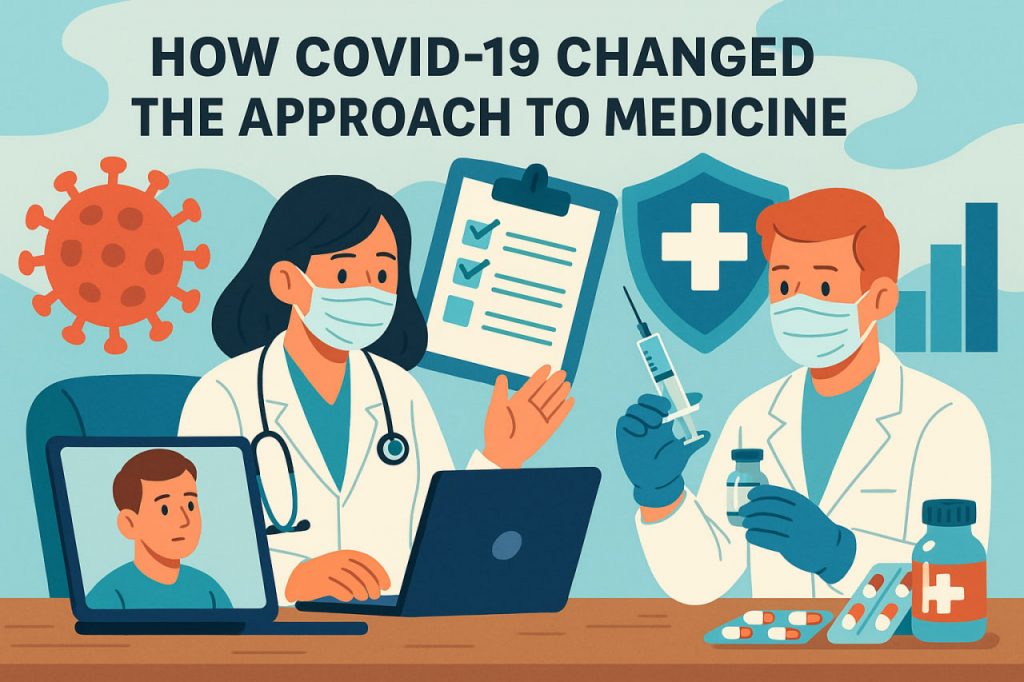The COVID-19 pandemic has left a lasting mark on global health systems, medical research, and everyday healthcare practices. Beyond its immediate impact, the crisis prompted a rethinking of how medicine is delivered, how healthcare systems are structured, and how quickly the world must respond to public health emergencies. These changes are expected to shape medicine for years to come.
Rise of Telemedicine
One of the most visible transformations has been the widespread adoption of telemedicine. As hospitals became overwhelmed and lockdowns restricted movement, patients and doctors turned to virtual consultations. This shift improved access for many, especially those in rural or underserved areas. It also emphasized the importance of digital literacy and the need for reliable remote diagnostic tools.
Faster Vaccine Development
COVID-19 accelerated the timeline for vaccine development through unprecedented global collaboration. Technologies such as mRNA vaccines proved not only effective but also adaptable for future diseases. Regulatory agencies worked under emergency protocols, prompting discussion about how to safely speed up drug approval in future crises.
Global Supply Chain Awareness
The pandemic revealed critical weaknesses in medical supply chains. Shortages of protective gear, ventilators, and essential medicines led to renewed interest in local production, inventory planning, and supply chain diversification. Hospitals began rethinking how to prepare for future waves or unrelated global disruptions.
Data Sharing and Digital Health Records
COVID-19 also increased the urgency of adopting interoperable health data systems. Real-time access to patient data allowed for faster contact tracing, treatment planning, and disease tracking. Governments and institutions recognized the need for secure but accessible digital health infrastructure across borders.
Shift Toward Preventive Medicine
Public awareness of preventive healthcare grew significantly. More people now understand the value of vaccination, hygiene practices, and early detection of illness. Medical institutions began placing greater focus on community health, public education, and improving the health resilience of populations.
Burnout and Mental Health in Healthcare Workers
The strain placed on healthcare providers brought attention to the mental health crisis within the medical community. Long hours, emotional trauma, and staffing shortages triggered widespread burnout. This led to increased advocacy for workplace well-being, mental health support, and fair compensation policies.
Glossary
- COVID-19 pandemic – a global outbreak of the SARS-CoV-2 virus that began in 2019
- Telemedicine – the use of telecommunications technology for remote medical care
- mRNA vaccine – a type of vaccine that teaches cells to produce an immune response
- Public health emergency – an event requiring immediate health system action
- Interoperable data systems – technology that allows different medical databases to communicate
- Preventive medicine – medical practices aimed at disease prevention rather than treatment
- Supply chain – the system of producing and delivering goods and services
- Burnout – physical and mental exhaustion from chronic workplace stress


